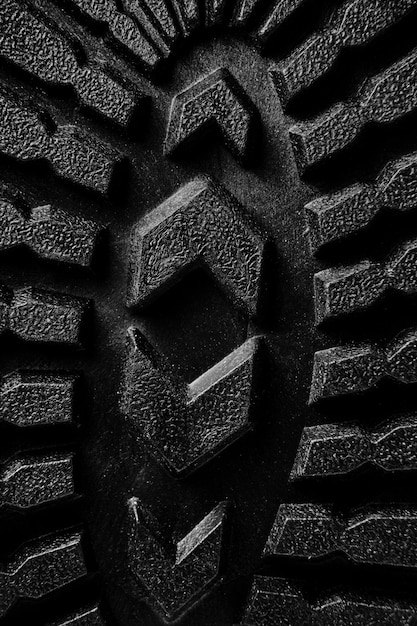Choose the Right Hiking Boots for the German Alps: A Beginner’s Guide

Advertisements
Choosing the right hiking boots for the German Alps involves considering factors like fit, support, material, and sole type to ensure comfort, stability, and protection on varied terrains.
Embarking on a hiking adventure in the German Alps requires careful preparation, and choosing the right footwear is paramount. This guide will walk you through how to choose the right hiking boots for the German Alps: A beginner’s guide, ensuring comfort, safety, and an enjoyable experience.
Advertisements
Understanding Hiking Boot Basics
Before diving into specifics, let’s cover the fundamental aspects of hiking boots. Understanding these basics will help you make an informed decision tailored to your alpine adventures.
Types of Hiking Boots
Hiking boots come in various types, each suited for different terrains and hiking styles. Understanding these categories is the first step in choosing the right pair.
Advertisements
Here are the main types of hiking boots to consider:
- Light Hiking Boots: Ideal for well-maintained trails and shorter hikes. They are lightweight and flexible, providing comfort and agility.
- Midweight Hiking Boots: A versatile option suitable for a mix of terrains, from moderate trails to rocky paths. They offer a good balance of support and flexibility.
- Heavyweight Hiking Boots: Designed for challenging terrain, long treks, and carrying heavy loads. They provide maximum support, durability, and protection.
- Mountaineering Boots: Specialized boots for ice climbing and high-altitude mountaineering, offering rigid soles and insulation for extreme conditions.
Key Features to Look For
Beyond the type of boot, several key features influence their performance and suitability for the German Alps.
Consider these essential features when evaluating hiking boots:
- Ankle Support: Provides stability and prevents ankle injuries on uneven trails.
- Waterproofness: Keeps your feet dry in wet conditions, essential for unpredictable mountain weather.
- Breathability: Allows moisture to escape, preventing blisters and discomfort during long hikes.
- Traction: Ensures a firm grip on slippery surfaces, from muddy trails to rocky slopes.
Understanding the basics of hiking boots, from the different types to essential features, sets the stage for making an informed choice. These factors all contribute to ensuring your comfort and safety while hiking in the German Alps.

Assessing Your Hiking Needs in the German Alps
The German Alps offer a diverse range of hiking experiences, from gentle valley trails to challenging mountain ascents. Understanding your hiking needs is crucial for selecting the right boots.
Identifying Terrain and Trail Conditions
The type of terrain you’ll encounter significantly impacts your boot choice. Rocky, steep trails require more robust boots than well-maintained paths.
Here are some common trail conditions in the German Alps and the boot types best suited for them:
- Well-Maintained Trails: Light hiking boots for comfort and flexibility.
- Rocky, Uneven Terrain: Midweight hiking boots for added support and protection.
- Steep, Challenging Mountains: Heavyweight hiking boots for maximum stability and durability.
- Snow or Ice Cover: Mountaineering boots with crampon compatibility for enhanced grip.
Considering Hike Duration and Load
Longer hikes and heavier loads demand boots with greater support and cushioning. A weekend backpacking trip requires different boots than a day hike.
Think about these factors when assessing your needs:
- Hike Duration: Longer hikes require more supportive and comfortable boots.
- Pack Weight: Heavier packs necessitate boots with stiffer midsoles and ankle support.
- Frequency of Hiking: Regular hikers benefit from more durable and high-quality boots.
- Personal Fitness Level: Less experienced hikers might prefer lighter, more flexible boots.
Assessing your specific hiking needs—considering both terrain and duration—is crucial for selecting the right boots for your adventure in the German Alps. Matching your footwear to the challenges you’ll face ensures a more comfortable and enjoyable hiking experience.
Prioritizing Fit and Comfort
Fit and comfort are paramount when choosing hiking boots. Ill-fitting boots can lead to blisters, discomfort, and even injuries, ruining your hiking experience.
Proper Sizing and Measurement
Accurate sizing is the foundation of a good fit. Don’t rely on your regular shoe size; hiking boots often require a different size due to sock thickness and foot swelling during hikes.
Follow these steps for accurate sizing:
- Measure Your Feet: Use a Brannock device or trace your foot on paper to measure length and width.
- Try Boots with Hiking Socks: Always try on boots with the socks you plan to wear on your hikes.
- Account for Swelling: Try on boots later in the day when your feet are more swollen.
Evaluating Boot Comfort Features
Beyond size, several comfort features contribute to a pleasant hiking experience. Look for boots with adequate cushioning, arch support, and breathability.
Consider these comfort-enhancing features:
- Cushioning: Provides shock absorption and reduces fatigue on long hikes.
- Arch Support: Prevents foot pain and ensures proper alignment.
- Breathability: Keeps your feet cool and dry, preventing blisters.
- Padding: Offers extra comfort around the ankle and tongue areas.
Ensuring a proper fit and prioritizing comfort features are essential for choosing hiking boots that will support you every step of the way in the German Alps. Taking the time to find the right fit will significantly enhance your overall hiking experience.

Understanding Boot Components and Materials
The components and materials used in hiking boots play a crucial role in their performance, durability, and comfort. Familiarizing yourself with these aspects will help you make a well-informed decision.
Upper Materials: Leather vs. Synthetic
The upper material of a hiking boot significantly impacts its durability, waterproofness, and breathability. Leather and synthetic materials each have their strengths and weaknesses.
Here’s a breakdown of leather and synthetic uppers:
- Leather: Known for its durability, water resistance, and ability to mold to the foot over time.
- Synthetic: Lighter, more breathable, and quicker to dry than leather. Often more affordable.
Sole Construction: Midsoles and Outsoles
The sole construction of a hiking boot determines its stiffness, cushioning, and traction. Midsoles and outsoles each have distinct functions.
Consider these aspects of sole construction:
- Midsoles: Provide cushioning and support. EVA (Ethylene-Vinyl Acetate) midsoles are lightweight and offer good cushioning, while PU (Polyurethane) midsoles are more durable and supportive.
- Outsoles: Determine traction and durability. Look for outsoles with deep lugs and aggressive tread patterns for optimal grip on varied terrain.
Understanding the materials and components used in hiking boots allows you to assess their suitability for the specific challenges of hiking in the German Alps. Balancing durability, comfort, and performance features ensures you choose boots that meet your needs.
Practical Tips for Trying On and Testing Boots
Trying on and testing hiking boots before purchasing is essential to ensure a proper fit and optimal comfort. Use these practical tips to evaluate your options thoroughly.
In-Store Evaluation Techniques
When trying on boots in a store, don’t just walk around. Perform specific movements to simulate hiking conditions.
Here are some techniques for in-store evaluation:
- Walk on an Incline: Test the boot’s ability to prevent your foot from sliding forward.
- Flex Your Foot: Check for pressure points or discomfort in the toe box.
- Assess Ankle Support: Walk on uneven surfaces to evaluate ankle stability.
At-Home Break-In Methods
Even the best-fitting boots often require some break-in time. Use these at-home methods to soften the boots and mold them to your feet.
Try these break-in techniques:
- Wear Boots Around the House: Start with short periods and gradually increase the time.
- Use a Boot Stretcher: Gently stretch tight spots to improve comfort.
- Apply Leather Conditioner: Soften leather boots to reduce stiffness.
By using practical techniques for trying on and breaking in your hiking boots, you can minimize discomfort and ensure an optimal fit for your adventures in the German Alps. These steps help you fine-tune your footwear to meet the demands of the trail.
Maintaining and Caring for Your Hiking Boots
Proper maintenance and care can significantly extend the life of your hiking boots and ensure they continue to perform well on the trails. Follow these tips to keep your boots in top condition.
Cleaning and Waterproofing
Regular cleaning prevents dirt and debris from damaging the boot materials. Waterproofing enhances their ability to repel water and maintain breathability.
Here are some cleaning and waterproofing tips:
- Clean After Each Hike: Use a soft brush and water to remove dirt and mud.
- Apply Waterproofing Products: Use sprays or creams designed for your boot material.
- Dry Properly: Air dry boots away from direct heat to prevent damage.
Storage and Longevity Tips
Proper storage protects your boots from damage and extends their lifespan. Follow these tips to store your boots correctly.
Consider these storage and longevity tips:
- Store in a Cool, Dry Place: Avoid direct sunlight and humidity.
- Use Boot Trees: Maintain the boot’s shape and prevent creasing.
- Rotate Boots: If you hike frequently, rotate between multiple pairs to reduce wear.
Maintaining and caring for your hiking boots extends their lifespan and ensures they perform well on every hike. Regular cleaning, waterproofing, and proper storage are essential for keeping your boots in top condition, so you can enjoy comfortable and reliable footwear on the trails of the German Alps.
| Key Point | Brief Description |
|---|---|
| 📏 Accurate Sizing | Measure feet with hiking socks for proper fit. |
| ⛰️ Terrain Type | Match boot type to trail conditions. |
| 💧 Waterproofing | Apply regularly to keep feet dry. |
| 🧦 Hiking Socks | Always try boots with hiking socks. |
Frequently Asked Questions
▼
The lifespan of hiking boots varies with use and quality. Typically, replace them every 500-800 miles, or when you notice reduced support or significant wear on the soles and uppers.
▼
While possible for easy trails, it’s not recommended. Hiking boots provide essential ankle support, traction, and protection against the varied terrain, reducing the risk of injuries.
▼
Look for waterproof membranes like Gore-Tex and apply waterproofing treatments regularly. Also, ensure the boots have good traction for slippery surfaces and quick-drying materials.
▼
Ensure your boots fit well, wear moisture-wicking socks, and use blister pads or tape on friction-prone areas. Break in your boots before long hikes to minimize stiffness.
▼
Leather boots offer durability and mold to your feet, while synthetic boots are lighter and quicker to dry. Choose based on your hiking needs, desired comfort, and environmental conditions.
Conclusion
Choosing the right hiking boots for the German Alps involves careful consideration of terrain, fit, and features. By following this guide, you can select footwear that ensures comfort, safety, and an unforgettable hiking experience in this stunning alpine region.